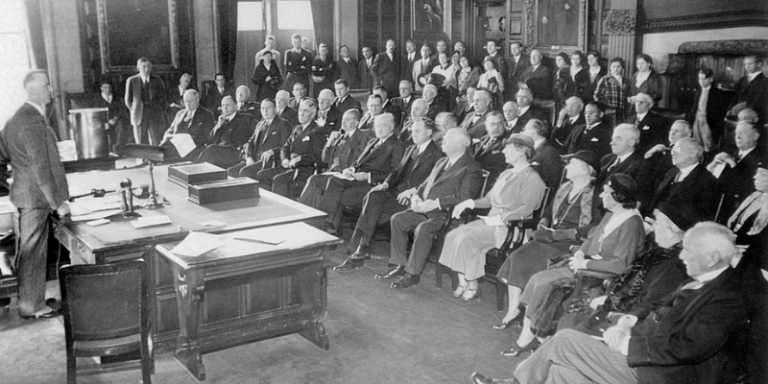Electoral College: Who Picks the President and Why?
Many Americans are confused by the Electoral College and why we have it.
By: Sarah Cowgill | December 18, 2020 | 469 Words

New York Electoral College votes for Roosevelt. (Getty Images)
The Electoral College is one of America’s top political discussion topics, as well as how we pick our president every four years, yet it still isn’t very well understood by many. What is the Electoral College, and why do we even have it?
During the Constitutional Convention in 1787, one of the most critical issues our Founding Fathers wanted to settle was how to pick the president. Many wanted a straight popular vote. However, others were worried that this would give too much power to states with big cities, like New York. This would mean states with fewer people wouldn’t really get a say in it.

According to the U.S. Constitution, every four years the president and vice president are chosen by a group of electors, collectively called the Electoral College. The Constitution says electors can’t be anyone in a federal office, but otherwise leaves it up to the individual states to regulate.
Today, there are 538 electors. That’s one for each member of the House of Representatives, one for each Senator, and three for the District of Columbia.
How Electors Are Selected
Every state appoints its electors according to its own laws. Most state parties select their number of electors at the county, district, or state conventions. On Election Day, whoever wins the popular vote in the state typically gets all electors. But results are not certified until the electors meet on the first Monday after the second Wednesday in December.
Faithless Electors
The process of electing the president is usually smooth and transparent – but there have been exceptions. In some cases, electors go against the popular vote result in their state and vote for whoever they want. But electors don’t break faith often. When they do, they usually don’t vote for the other leading candidate. Instead, it’s usually to make a political statement.
In the 2016 presidential election, ten electors tried to break with their states on the presidential ballot. Three of them were fined under faithless elector laws and either voted for who they were pledged to or were replaced. Of the remaining seven, three voted for Colin Powell and one each voted for John Kasich, Ron Paul, Bernie Sanders, and a Native American activist named Faith Spotted Eagle. The elector who voted for Faith Spotted Eagle, for example, had been pledged to Hillary Clinton, but wanted to make a point about how Clinton had failed the Native Americans. Altogether, Clinton lost five electors and Donald Trump lost two, but it was not nearly enough to change the election.
In 2020, the U.S. Supreme Court ruled states do have the constitutional power to force electors to vote along with their popular vote. And although every state can prevent faithless electors, they are not required to do so.















